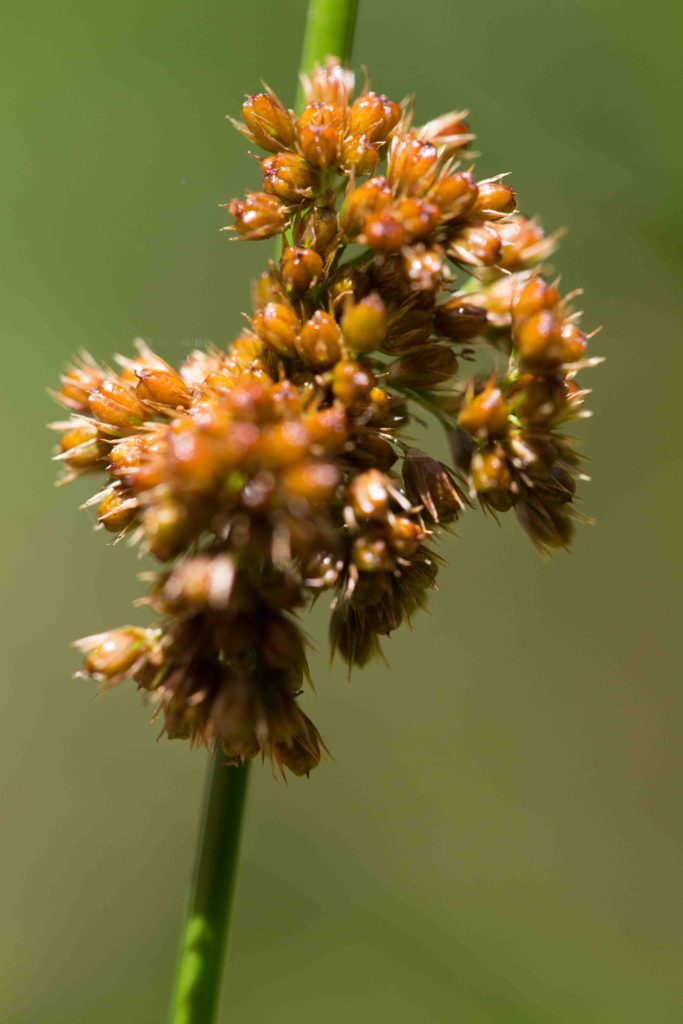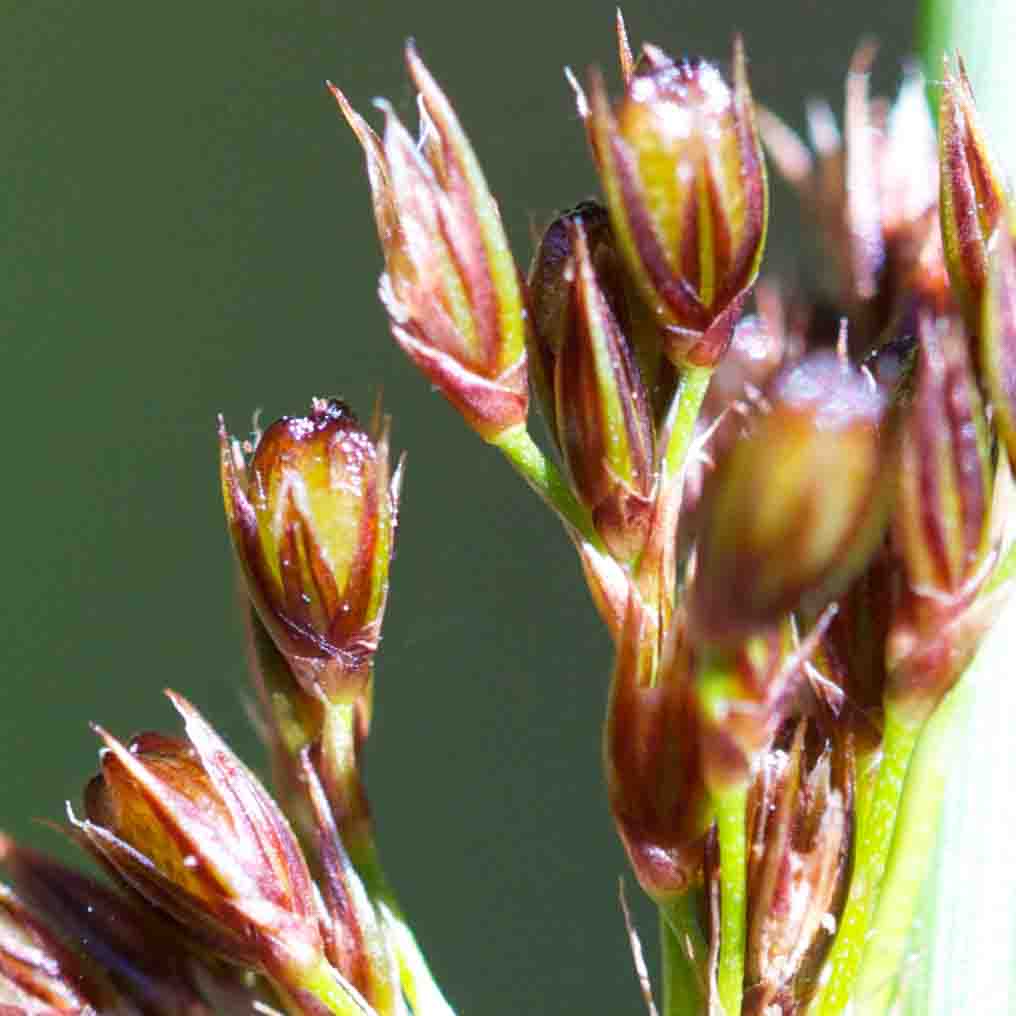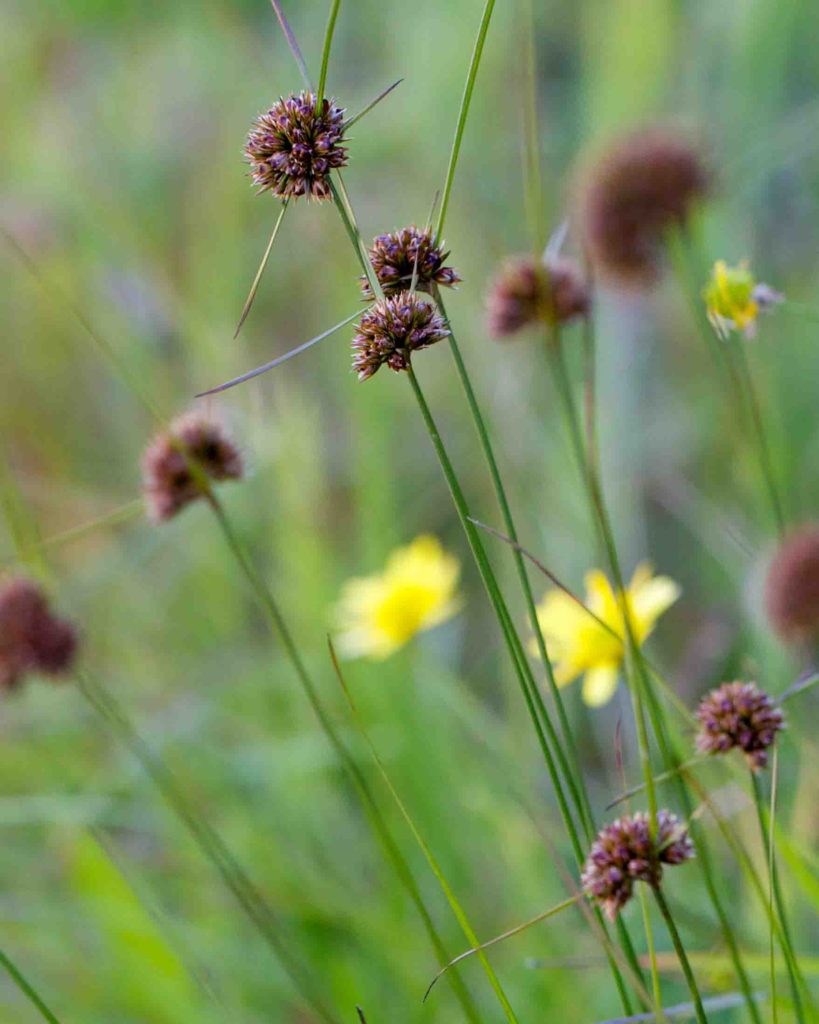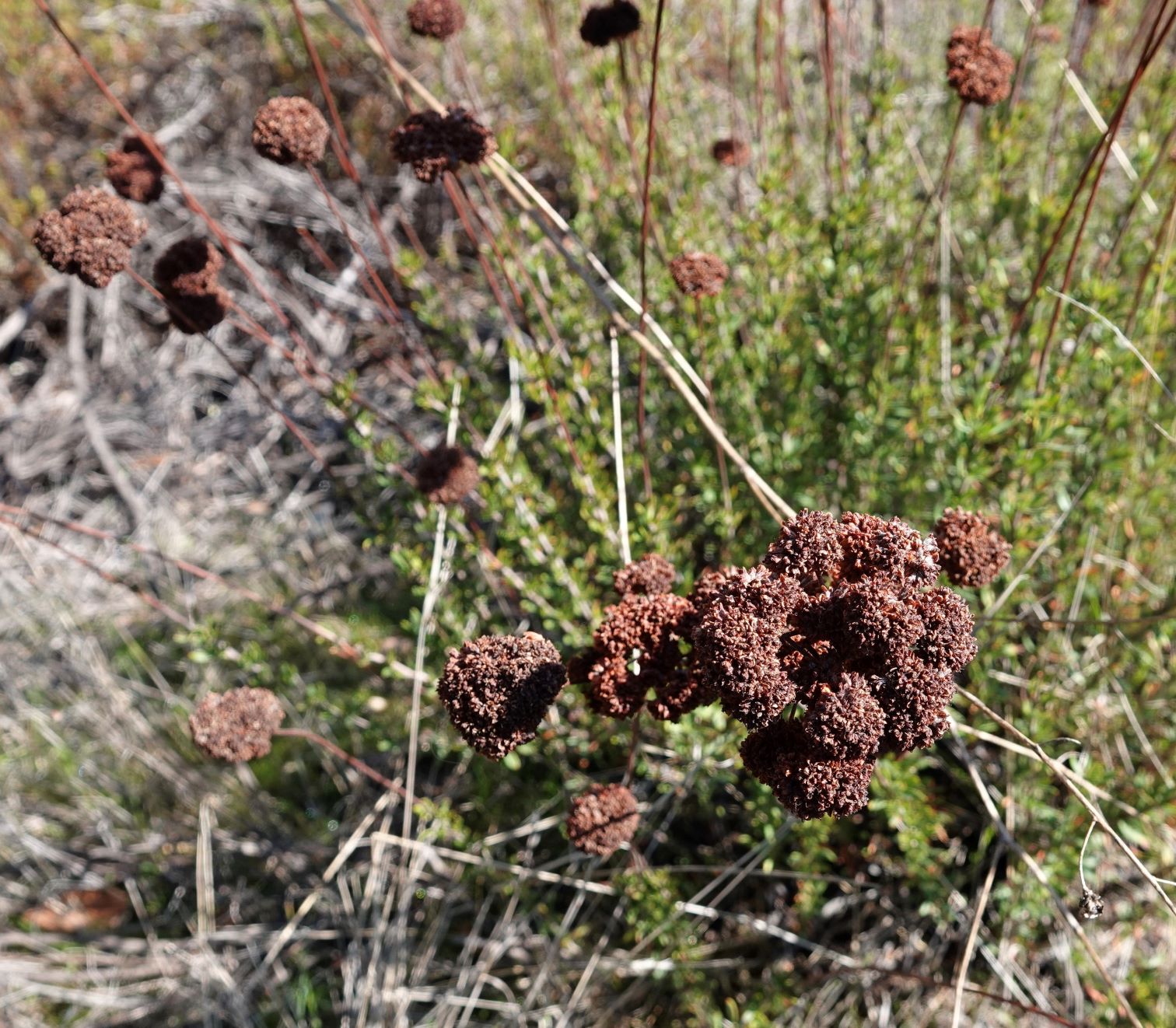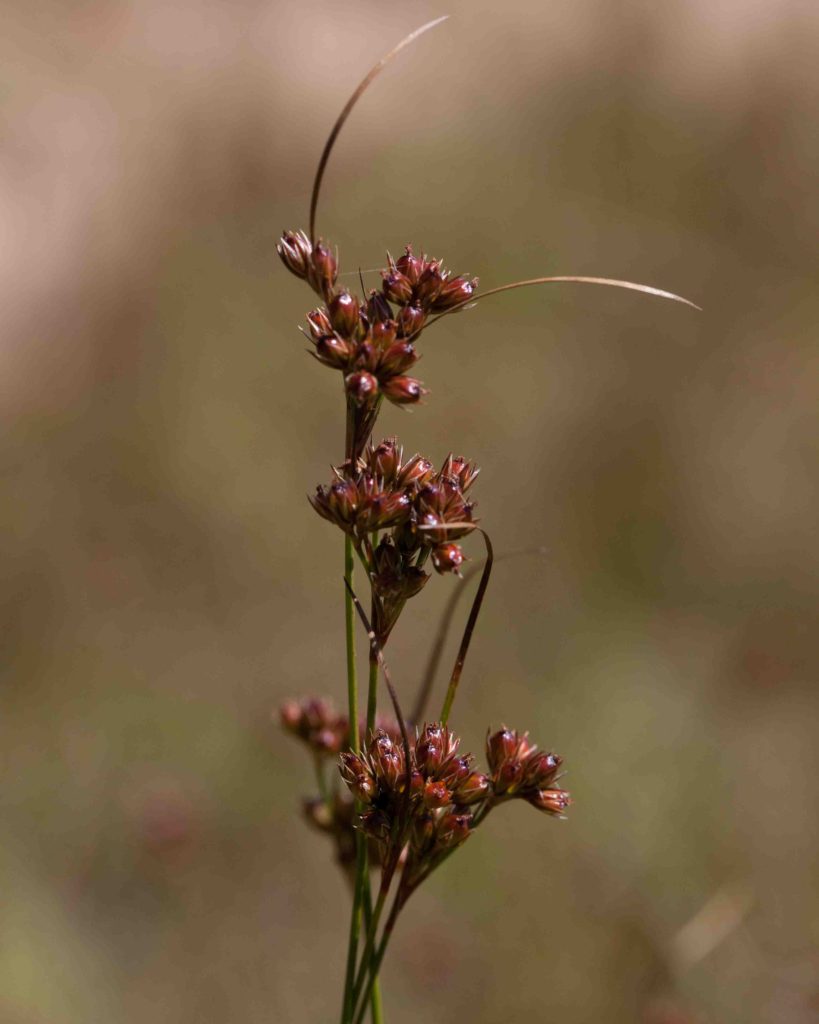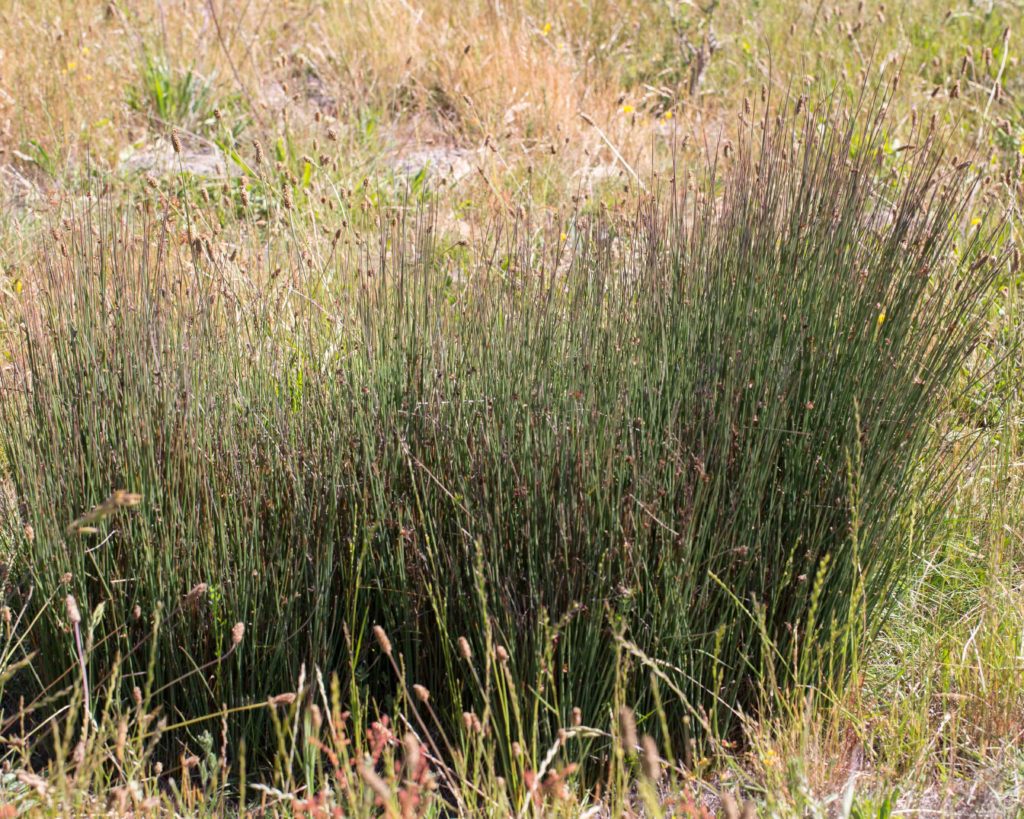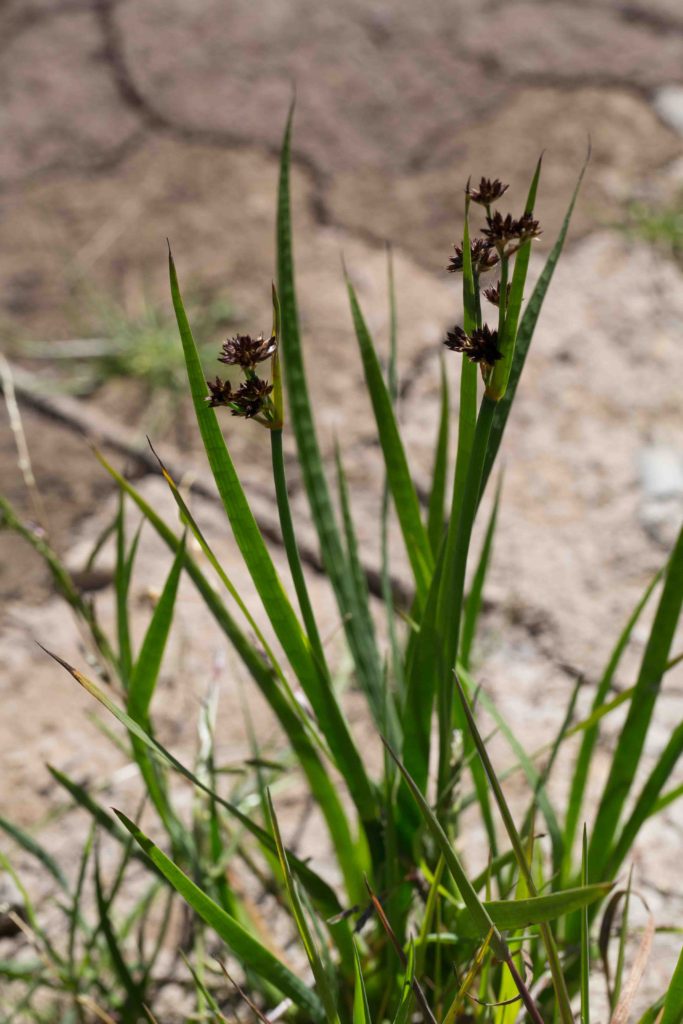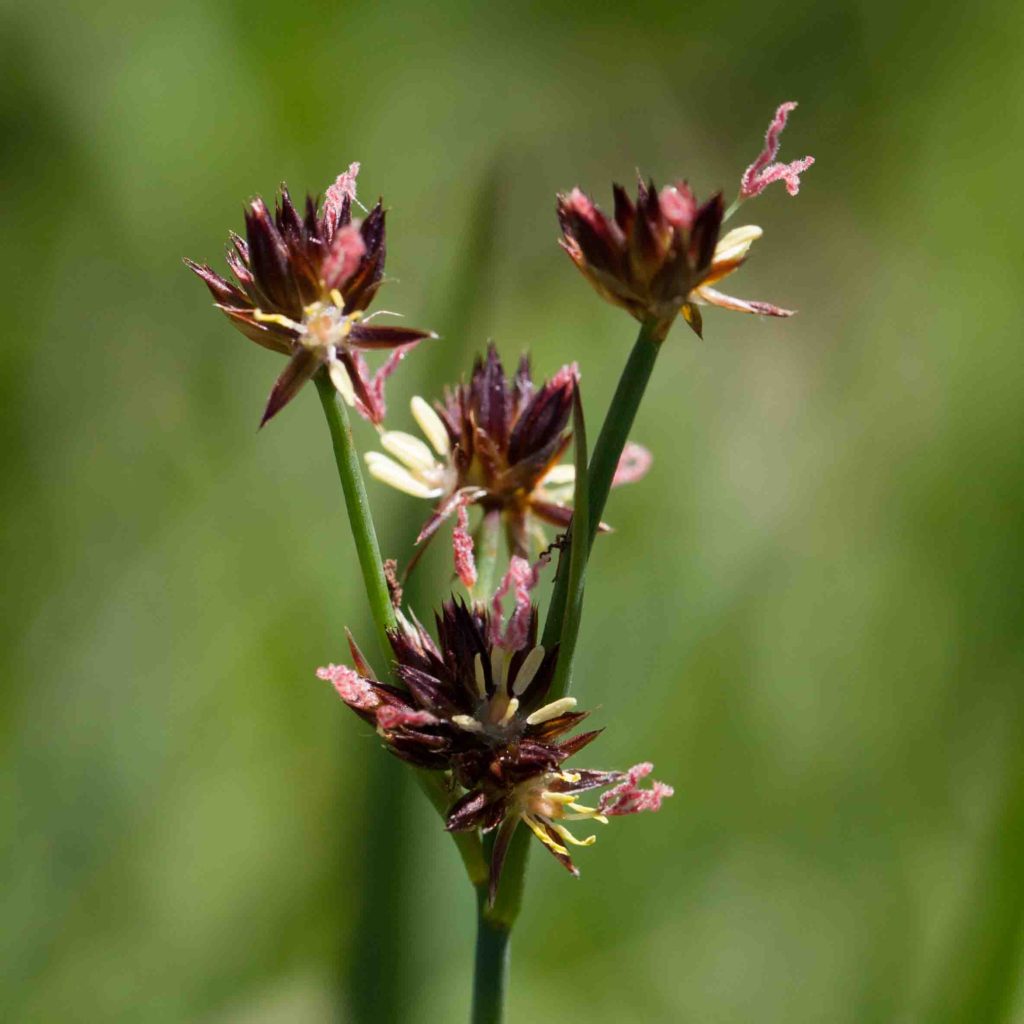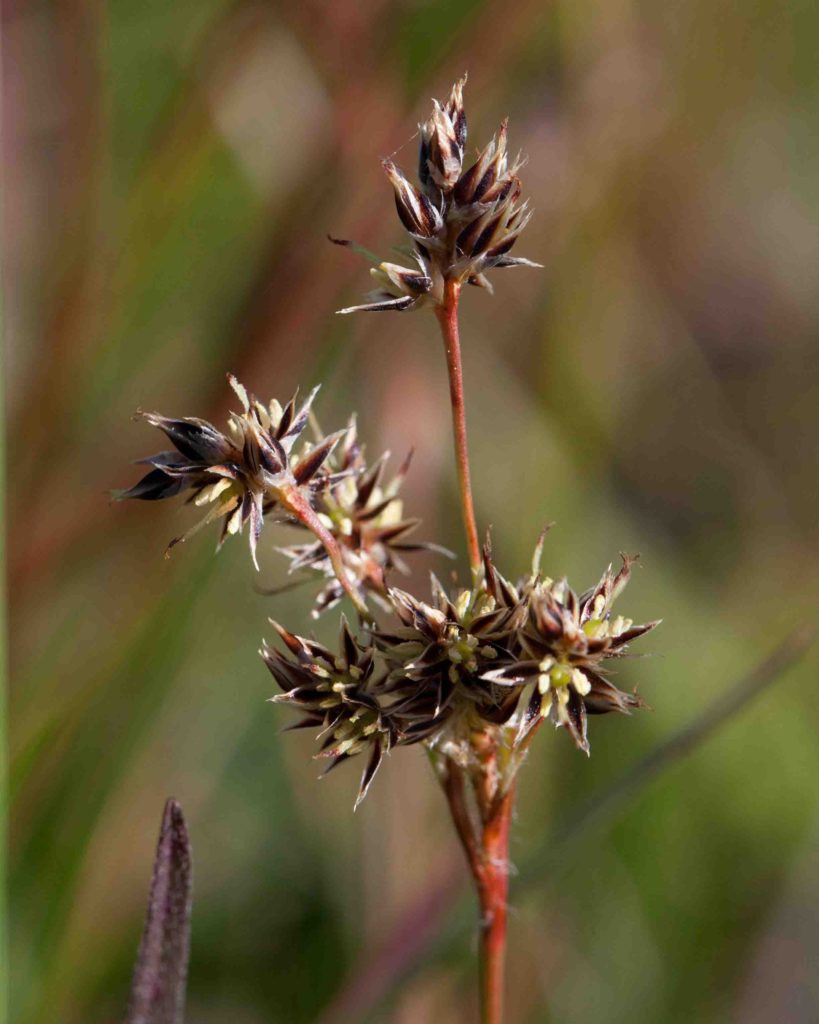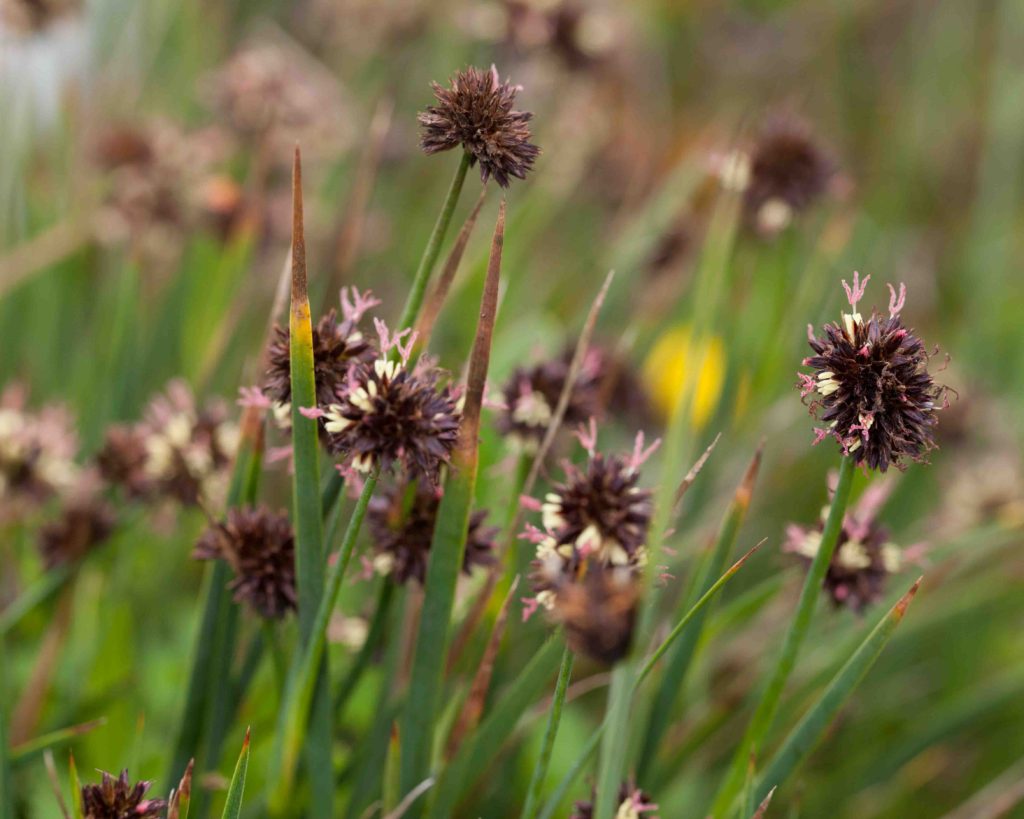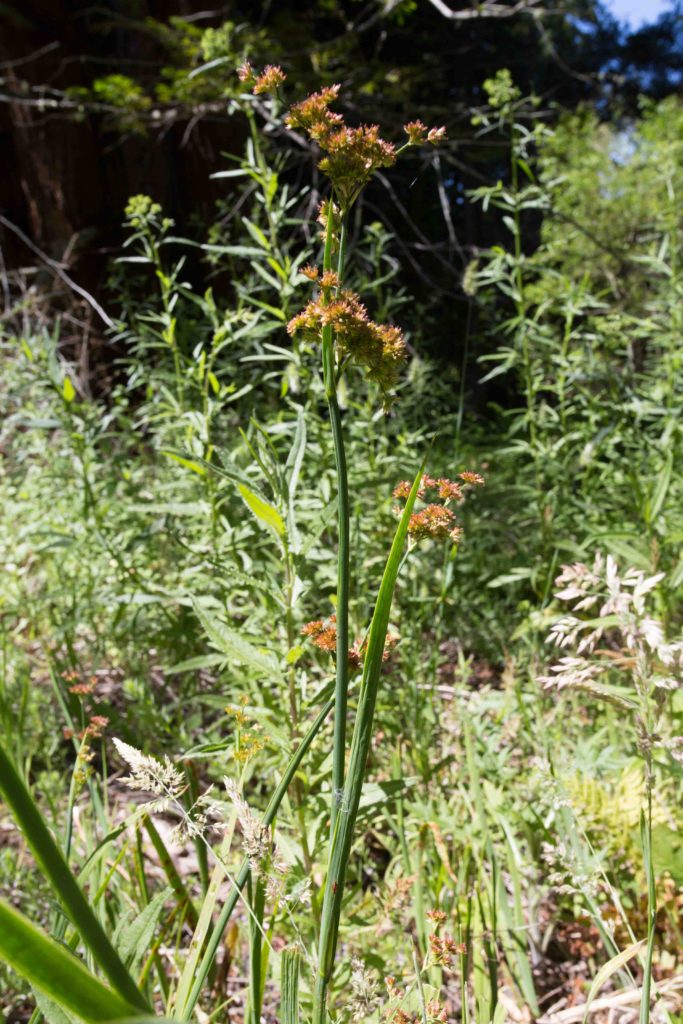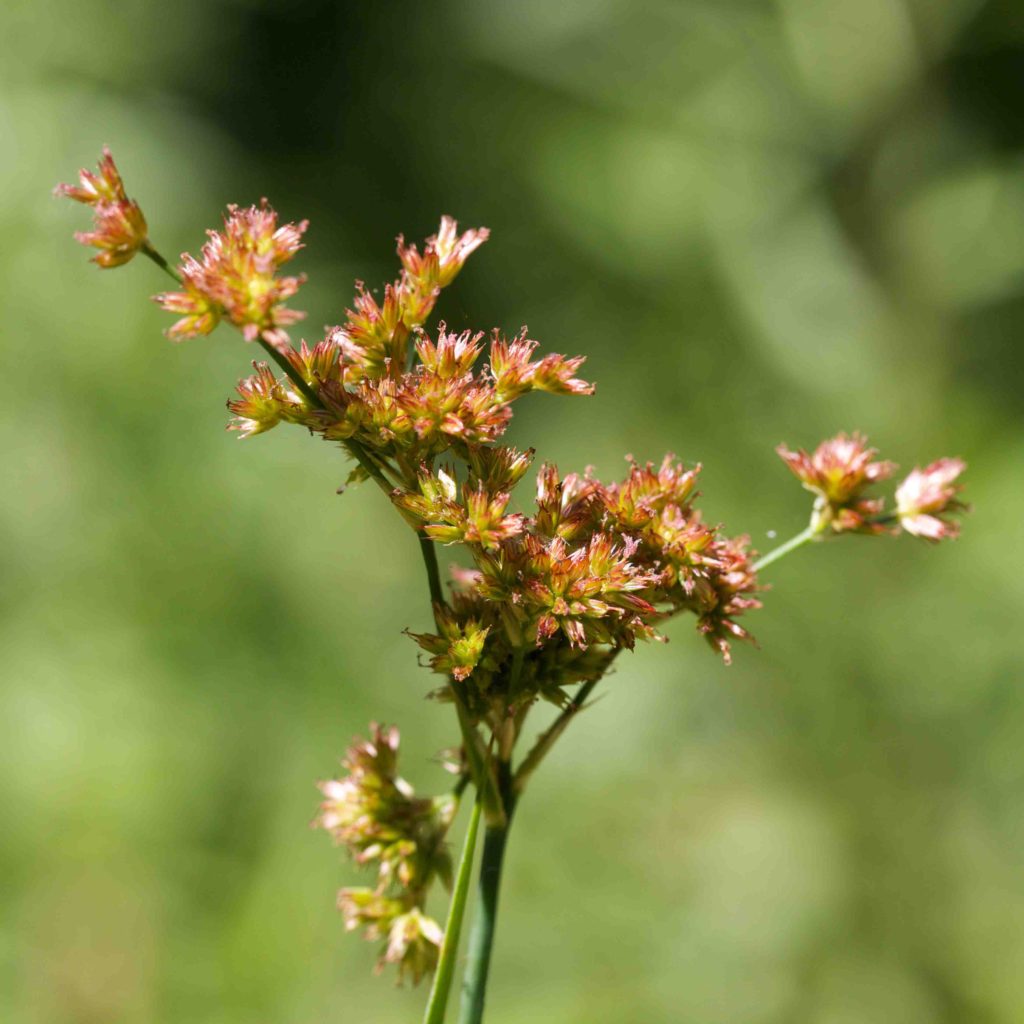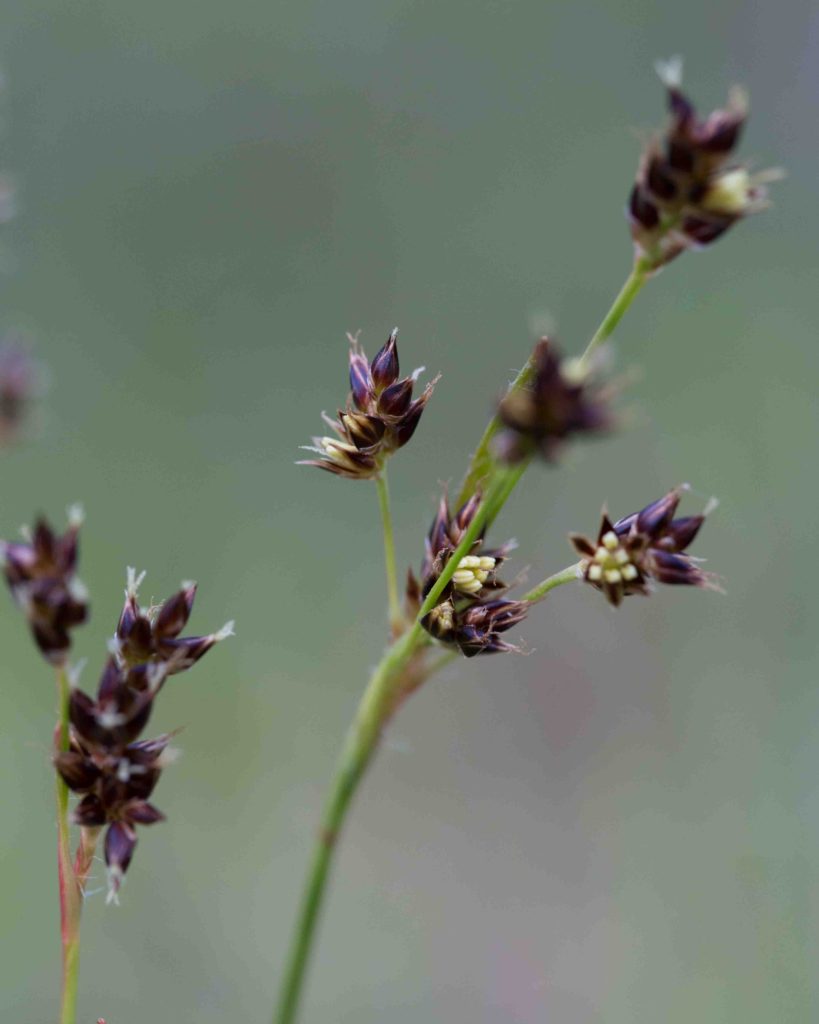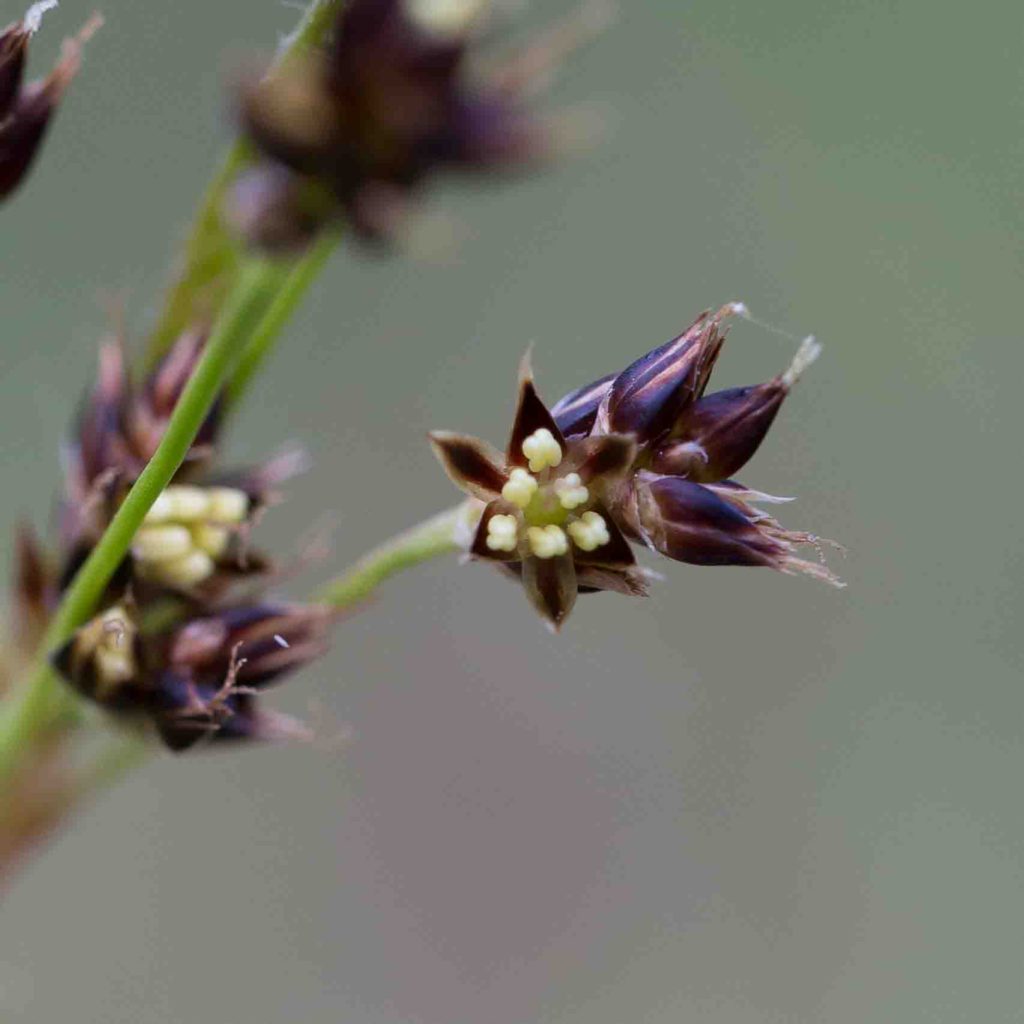Juncaceae: Rush Family
“Reeds and rushes are round, but sedges have edges.” There is some truth in this popular saying, but it is not always correct. Reeds and rushes vary from having cylindrical stems that follow with the pattern, to having grass-like leaves (oriented with their flat side towards the stem) or iris-like leaves (oriented with their edge towards the stem). Some have stiff leaves, others have softer, floppier leaves. A little attention to these details can help the identification process, since the difference between the flowers and fruits can be subtle.
Common Rush – Juncus effusus subsp. pacificus
Blooms:
May–Oct
Plant Height:
< 115 cm
Flower Size:
Small cluster
Origin:
Native
Habitat:
Seeps, shores, marshes, generally damp sunny ground
Notes:
The inflorescence appears to grow laterally from the stem about 20 cm from the top. But, in fact, it grows at the tip of the stem; and what appears to be stem above the inflorescence is a bract—with only a slight color-band marking to show where the stem ends and the bract begins. The plant is densely tufted—a key diagnostic feature. Only 3 rushes found in the county have inflorescences appearing to be lateral and grow in dense tufts. Of these three, two have green rather than blue-gray-green stems. Of these two, only this one has an open inflorescence. Fruits are brown, oblong to truncate. The lower stems have a dark sheath around their base. Photo #2 by CJH.
Western Rush – Juncus occidentalis
Blooms:
May–Sept
Plant Height:
30–60 cm
Flower Size:
Small cluster
Origin:
Native
Habitat:
Moist areas
Notes:
This is one of two rushes found in the county which have two bracts subtending the inflorescence (one is much longer than the other). And this is the only one with compact, clustered inflorescences. Leaves are about ½ the length of the flowering stem, oriented like a grass, i.e. with the flat side towards the stem. The inflorescence is terminal, generally clustered near the coast, but more open when found inland. Fruits are oblong to ovate, and 3-angled. Photo #2 by CJH.
Spreading Rush – Juncus patens
Blooms:
June–Oct
Plant Height:
30–105 cm
Flower Size:
Small cluster
Origin:
Native
Habitat:
Moist areas in grassland and woods
Notes:
Like Common Rush (Juncus effusus, see above), the inflorescence appears to grow laterally from the stem about 20 cm from the top. But, in fact, it grows at the tip of the stem; and what appears to be stem above the inflorescence is actually bract—with only a slight color-band marking to show where the stem ends and the bract begins. The plant is densely tufted—a key diagnostic feature. Only 3 rushes found in the county have inflorescences appearing to be lateral and grow in dense tufts. Of these three, this is the only one with blue-gray-green stems and 6 rather than 3 stamens on its flowers. Photo #2 by CJH.
Brown-headed Rush – Juncus phaeocephalus var. phaeocephalus
Blooms:
June–Aug
Plant Height:
10–50 cm
Flower Size:
Small cluster
Origin:
Native
Habitat:
Shady or grassy places
Notes:
Like Iris-leaved Rush (Juncus xiphioides, see below), this small rush has leaves which are iris-like, oriented with the edge towards the stem. The inflorescence appears terminal. It is dark brown to dark purple or blackish in color, with anthers much longer than the filaments. Fruits are narrowly ovoid.
Iris-leaved Rush – Juncus xiphioides
Blooms:
July–Oct
Plant Height:
40–80 cm
Flower Size:
Small cluster
Origin:
Native
Habitat:
Wet places
Notes:
The common name points to one of the distinguishing feature of this rush. Namely, its leaves which are iris-like, oriented with the edge towards the stem, 5–14 mm wide, unlike most rushes in the county. The inflorescence is green or reddish, comprising a number of fairly open clusters. The anthers are pink, more or less the same length as the strongly exserted filaments. Fruits are oblong, abruptly tapered towards the beak.
Sessile Wood Rush – Luzula subsessilis
Blooms:
Apr–July
Plant Height:
20–30 cm
Flower Size:
Small cluster
Origin:
Native
Habitat:
Open, dryish woodland
Notes:
Although the flowers resemble those of Brown-headed Rush (Juncus phaeocephalus, see above), this is a much smaller plant. Also, it has very different leaves, thin, soft and grass-like, unlike the stiffer leaves found in the Juncus species. The leaves are slightly hairy on the margins. This species comes in two forms, one with 1 or 2 dense heads and the other, more widespread, with a branched umbel-like inflorescence. There is a single bract subtending the inflorescence, 1.5–7 cm long, generally shorter than the inflorescence.


